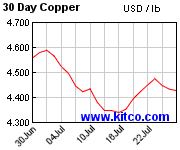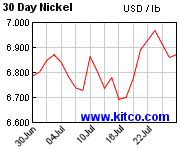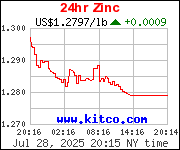May 31, 2006 | coins
It has been a very busy few weeks. Now that our Memorial Day weekend is over, I thought it was time to catch up on a few items.
Tom Noe, the indicted coin dealer charged with allegedly bilking the Ohio Bureau of Worker’s Compensation (BWC), pleaded guilty to three counts of federal campaign finance violations. Noe was charged with using friends and associates to funnel $45,400 to President Bush’s re-election campaign. It was reported that the plea deal came with a recommendation for a 2-year prison sentence. If Noe had gone to trial, a guilty verdict could have resulted in a 15-year sentence and over $900,000 in fines. Noe still faces charges in Ohio for the BWC case.
In Rock Me Amadeus, I wondered if the Austrian Mint would issue commemoratives honoring the 250th birthday of Wolfgang Amadeus Mozart. My posting said that the Austrian Mint scheduled the release of Mozart collectibles on May 10th. A visit to their site lead me to Euro Collections International, the official dealer for the Austrian Mint’s North American Market. My quick search found an 2006 Austrian 5 Euro siver commemorative in a special collectors card and a 50 Euro gold commemorative coin. I also found a 2006-D uncirculated and proof 10 Euro commemorative coins from the German Mint (the D mint mark indicates the was struck at the Munich Mint).
I also have been waxing poetic on the beauty of silver and its price. Silver closed at $12.42 today, below the $13 price I wrote about earlier. Like all investments, you have to decide what is best for your needs regardless of what Bill Gates and Warren Buffet do for their portfolios! I am still buying silver, but I am watching the price a little more closely.
Finally, my friends have been asking me about hoarding Lincoln cents since it costs more to make than face value. One thing everyone missed was that the cost to mint the coin also includes labor, materials, and other costs. The costs of the metal used to make the Lincoln Cent costs less than face value and not worth hoarding. Spend those little brown beauties. A future posting will look at the arguments for keeping or doing away with the cent.
May 29, 2006 | coins
On this Memorial Day, I want to take this opportunity to remember those who gave the ultimate sacrafice while defending freedom at home and abroad. Whether it was wars for this country’s freedom, helping allies overseas, world wars, or helping others settle armed conflict around the globe, it is important we take this day to honor their service that helped make this country what it is today.
Regardless of how you view the current world conflicts, the men and women who serve in our military deserve the honor and respect for their service. Pray for their ability to safely return home.
We will resume numismatic writings shortly.
May 18, 2006 | coins, US Mint
 Last week, I was as intrigued with the political stories as many of you have been. Since I had purchased a copy of USA Today to read these revelations, I decided to read the rest of the paper. In the business section was the article “Coins cost more to make than face value” explaining that the US Mint estimates that it will cost 1.23 cents to strike the Lincoln Cent and 5.73 cents to strike the Return to Monticello nickel.
Last week, I was as intrigued with the political stories as many of you have been. Since I had purchased a copy of USA Today to read these revelations, I decided to read the rest of the paper. In the business section was the article “Coins cost more to make than face value” explaining that the US Mint estimates that it will cost 1.23 cents to strike the Lincoln Cent and 5.73 cents to strike the Return to Monticello nickel.
 This article and a similar article from Numismatic News explains that along with the rising metal prices, fuel and processing costs will has caused the price of production to rise. The composition of the cent is 97.5% zinc plated with copper (2.5 grams) and the nickel is made with 75% copper and 25% zinc (5 grams). As I write this, the closing price per pound of zinc is $1.4952, nickel is $9.4092, and copper closed at $3.6266. Prior to the change in 1982, the composition of the Lincoln cent was 95% copper and the rest tin and zinc with a weight of 3.11 grams.
This article and a similar article from Numismatic News explains that along with the rising metal prices, fuel and processing costs will has caused the price of production to rise. The composition of the cent is 97.5% zinc plated with copper (2.5 grams) and the nickel is made with 75% copper and 25% zinc (5 grams). As I write this, the closing price per pound of zinc is $1.4952, nickel is $9.4092, and copper closed at $3.6266. Prior to the change in 1982, the composition of the Lincoln cent was 95% copper and the rest tin and zinc with a weight of 3.11 grams.
 Before anyone starts to hoard these coins, the Mint told USA Today that the actual metal content of the cent is less than face value and the nickel is only fractionally more. Even if one was to hoard Lincoln cents from before 1982, the cost to process those coins to remove other metals and impurities would cost more than the net refined copper. With the rising cost of base metals, the future hoarding of US coinage could present an interesting problem.
Before anyone starts to hoard these coins, the Mint told USA Today that the actual metal content of the cent is less than face value and the nickel is only fractionally more. Even if one was to hoard Lincoln cents from before 1982, the cost to process those coins to remove other metals and impurities would cost more than the net refined copper. With the rising cost of base metals, the future hoarding of US coinage could present an interesting problem.
The Mint is one of the few profit-making agencies of the federal government. They reported a profit of $730 million last fiscal year. Mint officials estimate that profits will be down by approximately $45 million.
I wonder how that would change if the Bureau of Engraving and Printing stopped making $1 Federal Reserve Notes and the demand for $1 coins increased? But that is a discussion for another entry.
May 11, 2006 | coins
It has been a busy two weeks, but I wanted to write about an interesting transaction which I was involved. My professional life requires me to attend many meetings. One of these meetings involves someone who commutes every week from New York City to the Washington area. Before one of our meetings, he was talking about how he spent Saturday around Times Square and even visited a large toy store chain with his three children. As he was talking, he was jingling change in his pocket.
That is when the ever attentive numismatist in me sprung into action. I remembered the stories about author and former ANA Vice President Scott A. Travers placing 1909-S VDB and 1914-D Lincoln Cents into circulation—reportedly worth about $1,000 and $300 respectively. Travers also spent a 1908-S Indian Head Cent, the first cent minted in San Francisco and reportedly worth $200. I also do not remember anyone saying they found the coins. So I offered to buy all the change in my colleague’s pocket. With the change landing on the table, we counted over $7 in various denominations. I gave him $8 for all of the coins.
After completing the transaction, I began to look at the various cents in the pile. Following a comment of surprise after finding a 1982 Canadian Cent, I was asked why I was checking the cents. When I explained about the coins Travers placed in circulation and figuring that since he was in midtown Manhattan, I thought it was an interesting gamble. The pre-meeting congregants began to show interest in the coins.
Unfortunately, I did not find any of the coins Travers placed into circulation. But I did find a 1950 Washington Quarter along with the Canadian Cent. The quarter looks to be in Fine (F-12) condition and probably only worth its value in silver (approximately $2.67 with silver closing at $14.77 an ounce on May 11). This may be the makeup for my previous 7½ cent loss!



